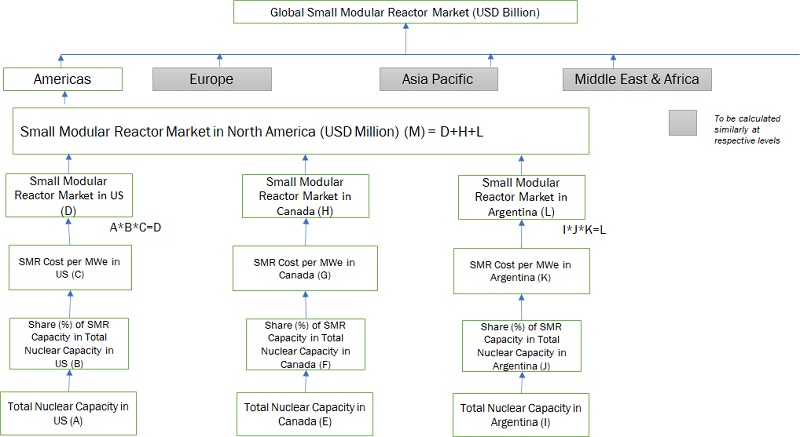The global small modular reactor market is projected to reach USD 7.0 billion by 2030 from an estimated USD 5.7 billion in 2022, at a CAGR of 2.7% during the forecast period.
The global small modular reactor market is driven by the growing need for clean, reliable and flexible power generation and helps in facilitating access to nuclear energy across diverse applications.
Key Market Players
A few major players that have a wide regional presence dominate the small modular reactor market. The leading players in the small modular reactor market include NuScale Power, LLC. (US), Westinghouse Electric Corporation (US), GE Hitachi Nuclear Energy (US), Terrestial Energy Inc. (Canada), and Moltex Energy (Canada).
Download PDF Brochure: https://www.marketsandmarkets.com/pdfdownloadNew.asp?id=5001546
The small modular reactor market, by type, is segmented into light-water reactors, heavy-water reactors, fast-neutron reactors, high-temperature reactors and molten salt reactors. The light-water reactor segment holds the largest share of the small modular reactor market, and a similar trend is likely to continue in the near future. Light-water reactor is the most commonly adopted SMR technology owing to the high degree of technological readiness and ease of licensing, as regulators and developers are familiar with this technology. These factors are expected to drive the market for this segment during the forecast period.

The report segments the small modular reactor market, by connectivity, into grid-connected and off-grid. The off-grid segment is expected to hold a larger market share during the forecast period. Off-grid SMRs are small and suited for remote locations where setting up a large nuclear power plant is not feasible. Such reactors provide a clean and flexible alternative to fossil-fuel-fired power generation and other nonelectric applications in remote communities, islands, isolated grid systems, and mining sites.
The report segments the small modular reactor market, by deployment, into single-module power plants and multi-module power plants. The multi-module power plant segment is projected to hold a larger market share during 2022–2030. The growth of this segment is driven by the flexible operation of modules and ease of financing. Multi-module power plants are designed to allow the addition of multiple reactors close to the same infrastructure and can be equipped with additional power units on the same site. The ability to add modules incrementally to meet the rise in demand reduces upfront investment and capital risks.
The small modular reactor market, by application, is categorized into power generation, desalination, hydrogen production and industrial application. The industrial segment of the small modular reactor market, by application, accounts for the largest market share among all the other segments owing to the rapid industrialization in developing economies, especially in the Asia Pacific region.
Ask Sample Pages: https://www.marketsandmarkets.com/requestsampleNew.asp?id=5001546
Asia Pacific is estimated to be the largest and fastest-growing market for small modular reactor during the forecast period. The region has been segmented, by country, into China, Japan, India, and South Korea. The growth of the Asia Pacific market is driven by the increasing investments for the deployment of SMRs in countries such as China and Japan. For instance, in China, various SMRs designs, such as the CAP200, the ACP100, the ACPR50S, and the HTR-PM, are being developed for land and marine deployment. Furthermore, the country plans to promote the construction of Generation III coastal nuclear power plants and accelerate the development of SMRs and offshore floating nuclear reactors. In Japan, the government has made several policy reforms to accelerate the decarbonization of the energy sector. For instance, in December 2020, the Japanese government launched a new initiative called Green Growth Strategy to achieve carbon neutrality by 2050.

